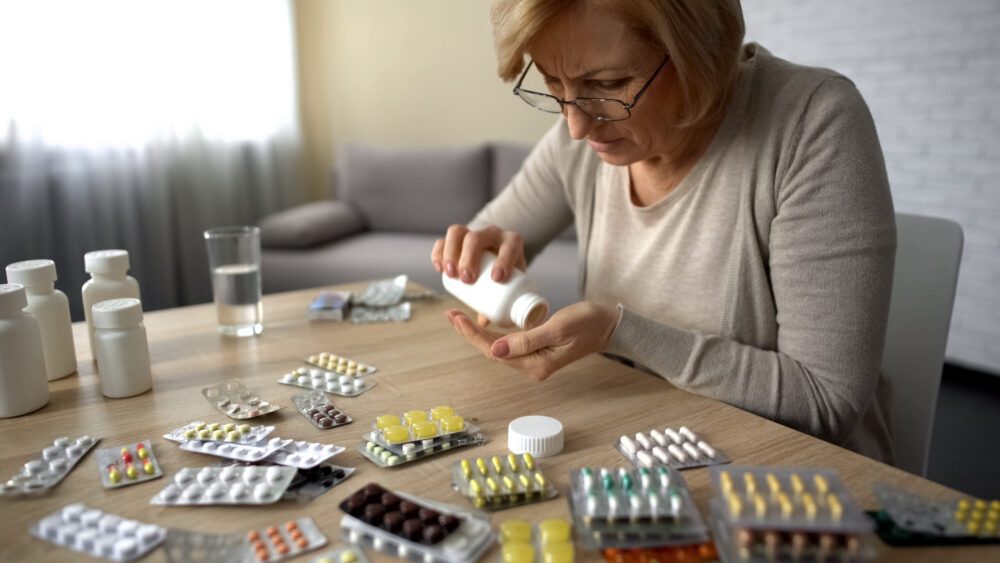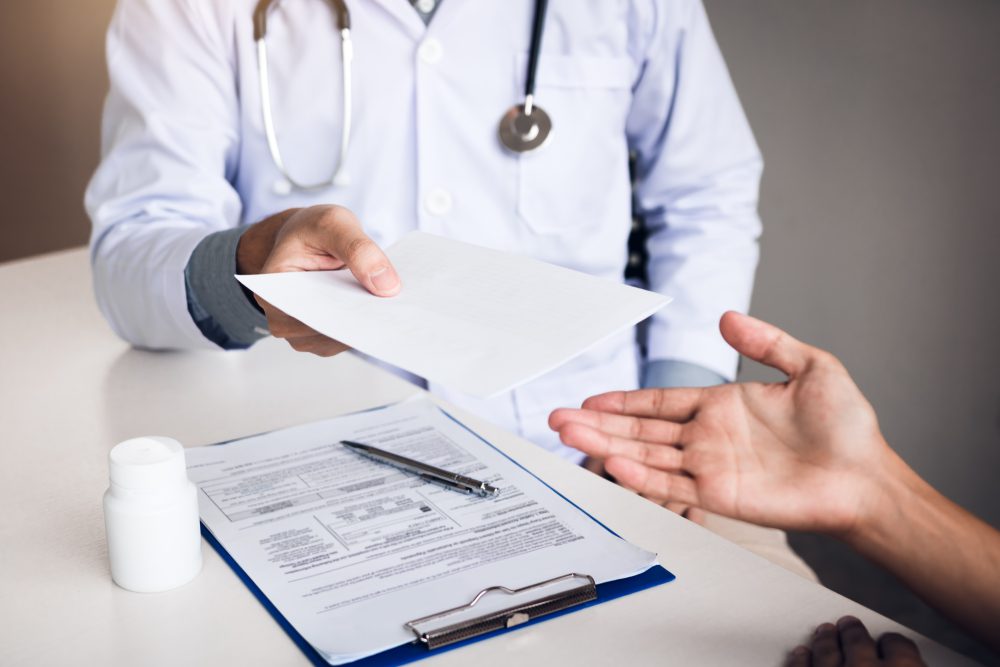
Vitamin B12 is more powerful than many of us would ever know. One of the reasons why it’s so crucial is because it helps make DNA, nerve, and blood cells, and it’s also enhancing a healthy brain and immune system.
Your metabolism wouldn’t be able to run smoothly without it. But B12 isn’t just like any other vitamin. It can only be found in animal products such as eggs, meat, shellfish, and dairy. Up to 15% of people lack this vitamin, and they’re either vegetarians, have celiac disease or other digestive problems, or are adults over 50.
Some of the signs of B12 deficiency can include exhaustion, rapid heartbeat, and brain fog. Care to know more about this vitamin? We’ll tell you everything you need to know!
Everything You Need To Know About Vitamin B12 Deficiency:
Vegetarians and vegans are more at risk
Vitamin B12 can be found naturally in many animal products. So if your diet is based mainly on plant-based foods like fruits, vegetables, beans, and soy, you’re highly at risk of suffering from a vitamin B12 deficiency.
“Vegetarians who consume eggs and dairy should try to include at least one source from these food groups once a day.” Stephanie Middleberg explained, RD, nutritionist at Middleberg Nutrition in New York City.
On the other hand, vegans don’t consume any animal products whatsoever, so they have to take a supplement or consume vitamin B12-fortified foods, like breakfast cereal and grains. Other types of foods that are fortified with B12 are non-dairy milk or meat substitutes. However, not all of these foods are reinforced, so check the label to be sure.
Adults over 50 years old are also at risk
The more you age, your stomach doesn’t produce as much acid as before, and the stomach acid in our body is absolutely key for B12 absorption, according to Middleberg. One in 31 adults over 50 years old is deficient, as calculated by the Centers for Disease Control and Prevention.
There are older individuals who suffer from poor appetites and food intakes, and they might be on medications, such as heartburn meds, that might reduce even more stomach acid levels. In fact, some of these seniors lose in time their ability to absorb vitamin B12 from food, and the only way they can get it is by taking supplements or even injections.
Some of its earliest symptoms include weakness and fatigue
Vitamin B12 is known to be the energy vitamin for a proper reason. Inadequate B12 intake only leads to a dent in red blood cell production, and some of the earliest signs of a deficiency might include feeling dragged, confused, and even weak.
According to Middleberg, the main problem is that these symptoms are pretty vague. I personally feel this way at least once a week…not to mention that they have a common ground with lots of other diseases.
Plus, they might be attributed to tons of other triggers, and most people will conclude it’s pointless to go get tested. If any of these symptoms hit and stick around for a longer period of time, the best thing you can do is to speak with your doctor and rule out any other causes.

Heartburn drugs can be at fault
There are some prescription heartburn drugs on the market that entirely suppress the production of stomach acid, which is highly needed in order to absorb vitamin B12. There’s a study made by JAMA that backs this up.
Researchers have found out that taking meds that have a proton, such as Prilosec and Nexium, for more than two years will pump inhibitors, which only leads to a 65% higher chance of having a vitamin B12 deficiency.
For every two years or more using H2 receptor blocker drugs, like Pepcid and Zantac, will lead to a 25% boost in deficiency chances.
If you happen to take these medications on a regular basis, you should talk to your doctor about what you should do next to protect your vitamin B12 intake.
It can be mistaken for dementia
Symptoms of such deficiency might mimic the symptoms of dementia, such as memory loss, orientation, and even difficulty thinking and reasoning, according to Middleberg. It’s sometimes even harder to distinguish a vitamin B12 deficiency from dementia, especially if older folks are basically at risk…for both.
Even worse, these two conditions might overlap, as 75% to 90% of B12 deficient people usually experience neurological complications such as dementia. And when a B12 shortage hits younger folks, it might still resemble dementia.
Experts haven’t deciphered exactly how are these two related to one another, but patients who suffer from unexplained cognitive decline should definitely be tested for B12 deficiency.
Taking birth control pills will set you up for it
Women who’ve been on oral contraceptives for longer periods of time tend to have trouble absorbing vitamin B12, as Middleberg confirmed.
There are studies that show how some of these pills are higher in estrogen and are more likely associated with B12 and folate (folic acid, and vitamin B6) deficiency.
Apparently, the estrogen in the pill is at fault for this impaired absorption. So if you’re on the pill, you need to have a chat with your doctor about the risks, or whether you should be taking B12 supplements as a backup. It’s best to be safe than sorry!
The best sources of B12 are meat and fish
Beef liver and clams are at the top of B12, as the National Institutes of Health have confirmed. If you aren’t a fan of either of those, there are plenty of options out there too.
Ground beef, oysters, trout, and even salmon are B12 superstars, as a serving of each will deliver close to or even more than 100% of your RDA (2.4 micrograms for men and women over 14, and it goes up to 2.6 and 2.8 for pregnant women or women who are currently breastfeeding).
Also, eggs (0.6 micrograms per egg, 10% of daily value) but also milk (1.2 micrograms per cup of low-fat, 18 percent of daily value) are also incredibly solid sources.
Fortified foods and supplements can help
They both can help vegans, vegetarians, older adults, and other people who are simply unable to naturally absorb B12. When absorption is a problem, “simply loading up on foods that are naturally high in B12 might not be the answer to this issue.
The synthetic form of B12 is definitely more readily absorbed.” You’ll have a higher chance of finding vitamin B12 in fortified cereals, as many of those have 100% of your RDA.

Heavy drinking increases your odds
Did you know that if you drink a couple of drinks every day you can get gastritis, and irritation of the stomach lining, which can lead to lower stomach acid and reduced B12 absorption? Middleberg enlightened us on this matter, explaining in which ways is alcohol linked to vitamin B12 deficiency.
B12 is stored in the liver, so drinking alcohol can impair liver function and deplete B12 stores or even make it more difficult for the liver to use it.
It can even trigger a false positive on a Pap test
What’s even worse about having a vitamin B12 deficiency is that it can affect your Pap test. The Pap test is absolutely essential to women, as it helps screen for any possible signs of cervical cancer.
However, low B12 levels can actually affect the way some cervical cells look, which can potentially trigger a false positive, as the National Institute of Health has shown. Truth to be told, this is a serious reason to start taking care of your vitamin B12 intake.
It’s linked to pernicious anemia
There’s a special type of anemia that can be triggered by a B12 deficiency. It’s called pernicious anemia, which basically means “dangerous”, as in the past it was considered to be life-threatening. Pernicious anemia is what happens when the stomach isn’t capable of making enough of a protein known as an intrinsic factor, which helps our intestine absorb B12.
Pernicious anemia may come as a result of an autoimmune issue, a problem with the stomach lining, or even a congenital condition that is passed down through families. In this case, the treatment usually implies B12 shots, and in some cases, combined with supplements.
It can be hard to recognize this type of deficiency
“As the body can store vitamin B12 for three to five years, the early symptoms of a possible deficiency are known to appear gradually. That’s why it’s highly likely you won’t even notice them.” as Middleberg explained.
After the initial clues (fatigue, weakness, brain fog) you should expect to notice more advanced tip-offs show up, like numbness and tingling of the limbs, depression, paranoia, and even hallucinations.
The signs differ in such a manner, and they don’t even strike every one, that it’s extremely difficult to diagnose even at a later stage. “The symptoms also depend on what caused the deficiency. When it’s malabsorption, it means that they are absorbing some B12 and the deficiency is occurring more slowly, or total lack of animal products, which might cause the deficiency to develop faster.
A blood test is the only way to confirm it
Blood levels of vitamin B12 less than 160 pg/mL might be interpreted as a sign of deficiency, as stated by the National Library of Medicine. “Blood tests are usually accurate. However, a false positive is also possible, as it’s related to certain cancers, oral contraceptives, folate (folic acid) deficiency, and even pregnancy.”
As Moon stated, false negatives might occur, for example in people who have liver disease, poorly functioning kidneys or even certain blood cell disorders. Your GP or primary care physician is recommended to take care of your test.
It’s linked to immune system issues
According to Middleberg, “B12 has a crucial role in white blood cell production, and white blood cells are also essential for proper immune system functioning.” A lack of vitamin B12 can lower your immunity, but also some immune system disorders can raise your chances of becoming deficient.
For example, Graves’ disease is an autoimmune condition of the thyroid, which causes hyperthyroidism, and is a high-risk factor for developing pernicious anemia, which leads to B12 deficiency. As you can see, vitamin B12 deficiency is a tiresome carousel of conditions from which you don’t even know where to begin.
Digestive problems can cause it
People who suffer from GI issues have a higher risk of a B12 shortage because their digestive problems can make the process of absorbing nutrients much more difficult, as Middleberg explained.
“For example, those who have gut issues, colitis, Crohn’s disease, inflammatory bowel disease, and even leaky gut syndrome have higher chances of suffering from a B12 deficiency.” Also, those who suffer from Celiac disease might have problems with absorption.
If you’re at risk for any of these conditions, ask your doctor about the possibility of taking supplements or B12 shots, as all the B12-rich food in the world won’t be absorbed properly by your body.
It can happen after weight loss surgery
There are some surgeries that might interfere with the GI tract, such as gastric bypass surgery, which makes it harder to absorb B12. One of the reasons has to do with a certain decrease in the body’s ability to digest food, but it might also result in iffy levels of intrinsic factor, which is a protein that helps the body absorb B12.
However, the absorption issue might be a permanent one, and people who undergo gastric bypass might have to take vitamin B12 supplements for the rest of their life. Otherwise, they might risk a shortage.
It can cause tingling, weakness, and balance issues
Depletion of the vitamin B12 stores only leads to nerve damage. That’s why long-term B12 deficiency can be read into sensations of pins and needles in your hands and feet, shaky body movements, and even trouble walking. Like many other B12 deficiency signs, these can all be attributed to other causes, such as aging. However, the only way to check it is to consult with your doctor.
Visible signs include pale skin, a sore tongue, and mouth ulcers
Other visible signs of vitamin B12 deficiency include pale skin, mouth sores, red, swollen, beefy tongue. These are all caused by deficiency-related changes in blood flow, and they can show up many years after the depletion is initiated, as Middleberg explained.
A rapid heartbeat or even heart palpitations might represent another blood flow-related sign, and sometimes bruising super easily can be read as a symptom.
If you enjoyed reading this article, we also recommend reading: Eat These 19 Foods To Keep Your Appetite Under Control
















